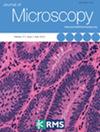逆行追踪乳腺癌相关感觉神经元
摘要
乳腺癌是妇女死亡的主要原因之一。由宿主细胞和细胞外基质组成的肿瘤微环境与癌细胞之间的相互作用及其对肿瘤进展的影响已被越来越多地研究。虽然乳房是人体神经支配最多的器官之一,但神经元,特别是感觉神经元的作用却一直未得到充分研究,这主要是由于技术原因。原因之一是感觉神经元的解剖结构:感觉神经元的体节位于脊柱,其轴突在体内的延伸长度可超过一米,为乳房提供神经支配。其次,神经元的培养具有挑战性,目前还没有能充分代表感觉神经元多样性的细胞系。最后,感觉神经元负责向大脑传输多种不同类型的信号,而且感觉神经元有许多不同的亚型。而支配乳腺肿瘤并与之相互作用的感觉神经元亚型尚不清楚。为了建立与乳腺癌细胞相互作用的神经元的标记和亚型分类工具,我们利用了神经科学中的两种逆行示踪标准:小麦胚芽凝集素(WGA)和霍乱毒素亚单位 B(CTB)。在体外,我们采用了从小鼠背根神经节中分离出来的初级感觉神经元,将其培养在定制的微流体设备 DACIT 中,该设备模拟了感觉神经元的体节和轴突的解剖分区。在体内,我们利用合成和转基因小鼠乳腺癌模型。我们发现 CTB 和 WGA 追踪的感觉神经元亚群不同但有重叠:WGA 在标记 CGRP+ 神经元方面更有效,而 CTB 则在标记 NF200+ 神经元方面更胜一筹。令人惊讶的是,这两种示踪剂在体外和体内都能被大量乳腺癌细胞吸收。总之,我们已经建立了逆行追踪与乳腺癌细胞相互作用的感觉神经元的方法。我们的工具将有助于今后对乳腺肿瘤神经支配的研究,以及针对乳腺癌相关神经元亚群的感觉神经元疗法的开发。铺垫描述:乳腺癌是一种侵袭性疾病,影响着全世界的女性和男性。据报道,乳腺癌患者的神经体积增大与预后不良有关,但神经,尤其是感觉神经在乳腺癌进展过程中的作用在很大程度上仍未得到充分研究。感觉神经负责向大脑传递疼痛、机械力(压力、张力、拉力、触觉)和温度等信号。人体的神经分布十分密集,延伸至外周器官的神经可长达数米。神经的分类和功能可能非常复杂,因为它们包含源自不同神经元体(体)的延伸束(轴突)。在细胞培养条件下维持神经元和生长轴突以模拟神经支配在技术上具有挑战性,因为它涉及人体的多个器官。在这里,我们的重点是追踪乳腺肿瘤的感觉轴突,使其回到位于脊柱内背根神经节的神经元体。为此,我们使用了两种不同的 "逆行 "示踪剂--WGA和CTB,它们都是具有天然能力的蛋白质,能够进入轴突并以逆行方式到达神经元体,即使这意味着需要走过超过一米的距离。这两种示踪剂都带有荧光标记,因此可以通过高分辨率荧光显微镜观察到。我们的研究表明,WGA 和 CTB 都能标记肿瘤或细胞培养条件下的感觉神经元。这两种示踪剂对不同感觉神经元亚群的示踪效率不同:WGA 对小 C 纤维(CGRP 阳性)的示踪效率更高,而 CTB 对感觉神经元的 A 纤维(NF200+)的示踪效率更高。总之,我们已经成功建立了感觉神经元逆行追踪技术,用于研究和定位乳腺癌神经支配。Breast cancer is one of the leading causes of mortality among women. The tumour microenvironment, consisting of host cells and extracellular matrix, has been increasingly studied for its interplay with cancer cells, and the resulting effect on tumour progression. While the breast is one of the most innervated organs in the body, the role of neurons, and specifically sensory neurons, has been understudied, mostly for technical reasons. One of the reasons is the anatomy of sensory neurons: sensory neuron somas are located in the spine, and their axons can extend longer than a meter across the body to provide innervation in the breast. Next, neurons are challenging to culture, and there are no cell lines adequately representing the diversity of sensory neurons. Finally, sensory neurons are responsible for transporting several different types of signals to the brain, and there are many different subtypes of sensory neurons. The subtypes of sensory neurons, which innervate and interact with breast tumours, are unknown. To establish the tools for labelling and subtyping neurons that interact with breast cancer cells, we utilised two retrograde tracer's standards in neuroscience, wheat-germ agglutinin (WGA) and cholera toxin subunit B (CTB). In vitro, we employed primary sensory neurons isolated from mouse dorsal root ganglia, cultured in a custom-built microfluidic device DACIT, that mimics the anatomical compartmentalisation of the sensory neuron's soma and axons. In vivo, we utilised both syngeneic and transgenic mouse models of mammary carcinoma. We show that CTB and WGA trace different but overlapping sensory neuronal subpopulations: while WGA is more efficient in labelling CGRP+ neurons, CTB is superior in labelling the NF200+ neurons. Surprisingly, both tracers are also taken up by a significant population of breast cancer cells, both in vitro and in vivo. In summary, we have established methodologies for retrograde tracing of sensory neurons interacting with breast cancer cells. Our tools will be useful for future studies of breast tumour innervation, and development of therapies targeting breast cancer-associated neuron subpopulations of sensory neurons. Lay description: Breast cancer is an aggressive disease that affects both women and men throughout the world. While it has been reported that the increasing size of nerves in breast cancer correlates to bad prognosis in patients, the role of nerves, especially sensory nerves, in breast cancer progression, has remained largely understudied. Sensory nerves are responsible for delivering signals such as pain, mechanical forces (pressure, tension, stretch, touch) and temperature to the brain. The human body is densely innervated, and nerves extending into peripheral organs can be as long as a few meters. Nerve classification and function can be very complex, as they contain bundles of extensions (axons) originating in different neuronal bodies (soma). Maintaining neurons and growing axons in cell culture conditions in order to mimic innervation is technically challenging, as it involves multiple organs of the human body. Here, we focus on tracing sensory axons from the breast tumours back to the neuronal soma, located in the dorsal root ganglia, inside the spine. To do so, we are using two different 'retrograde' tracers, WGA and CTB, which are proteins with a natural ability to enter axons and travel in a retrograde fashion, arriving at the soma, even if it means to travel distances longer than a meter. Both tracers are fluorescently labelled, making them visible using high-resolution fluorescent microscopy. We show that both WGA and CTB can label sensory neurons in tumours, or in cell culture conditions. The two tracers differ in efficiency of tracing different sensory neurons subpopulations: while WGA is more efficient in tracing small C-fibres (CGRP-positive), CTB is more efficient in tracing A-fibres (NF200+) of sensory neurons. In summary, we have successfully established retrograde tracing techniques for sensory neurons towards studying and targeting breast cancer innervation.

 求助内容:
求助内容: 应助结果提醒方式:
应助结果提醒方式:


